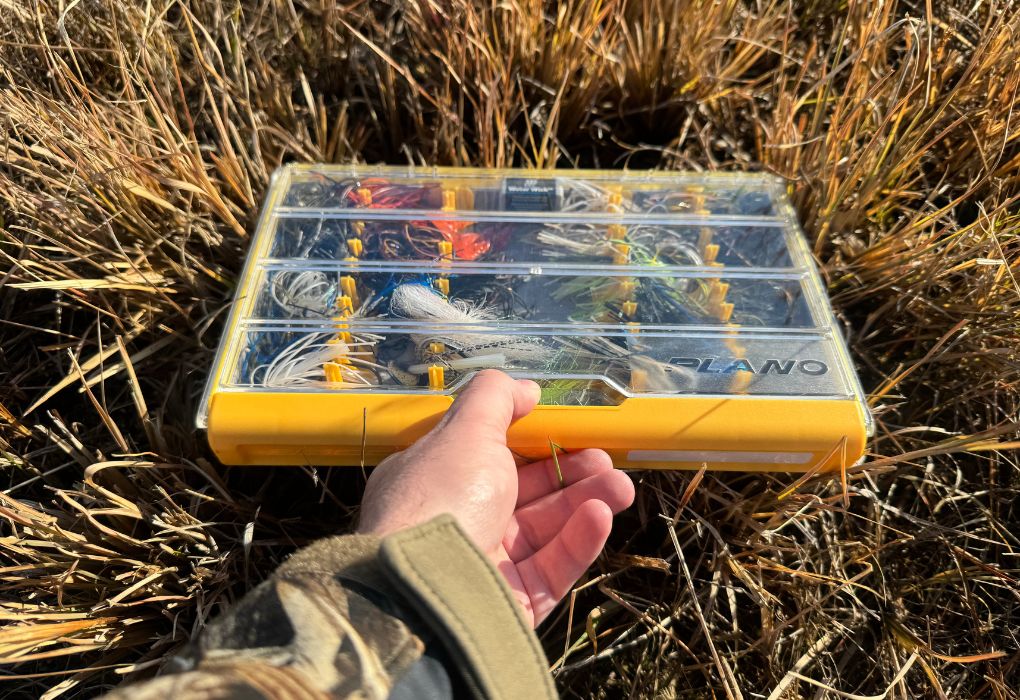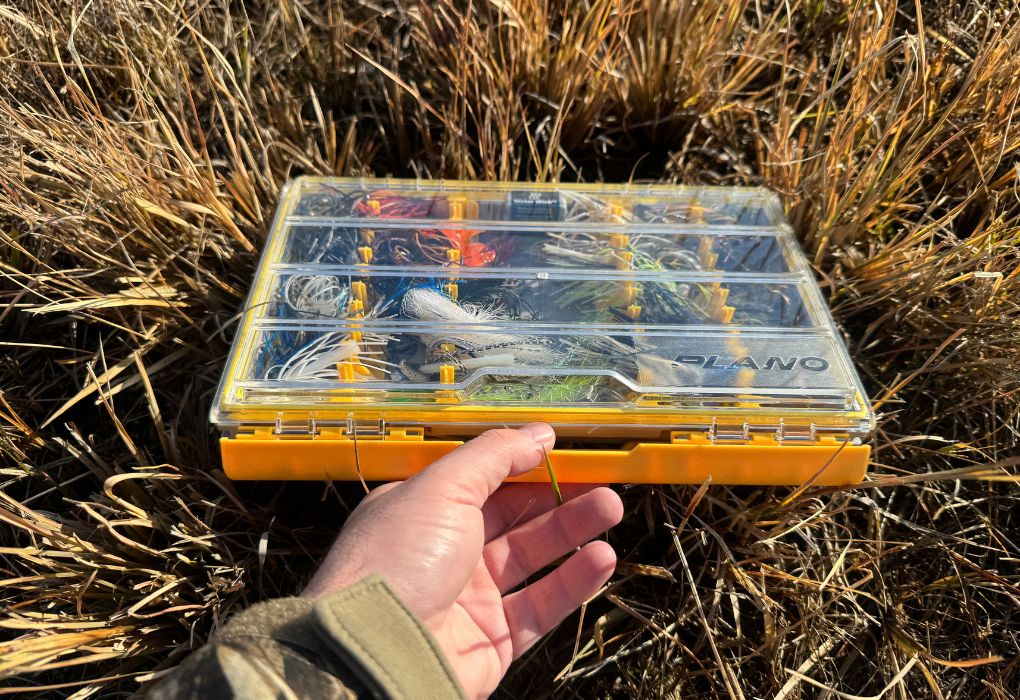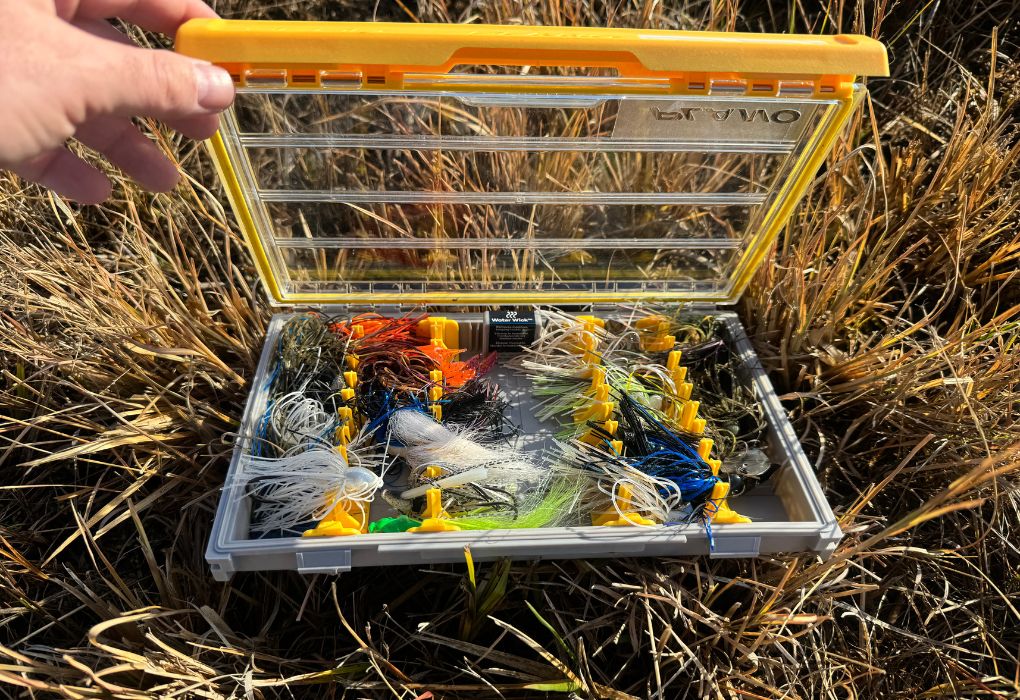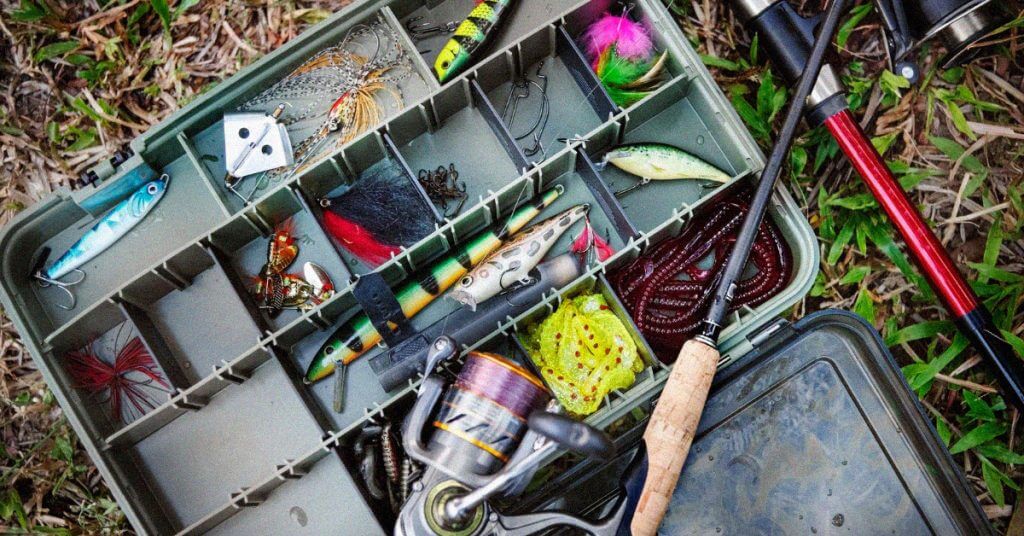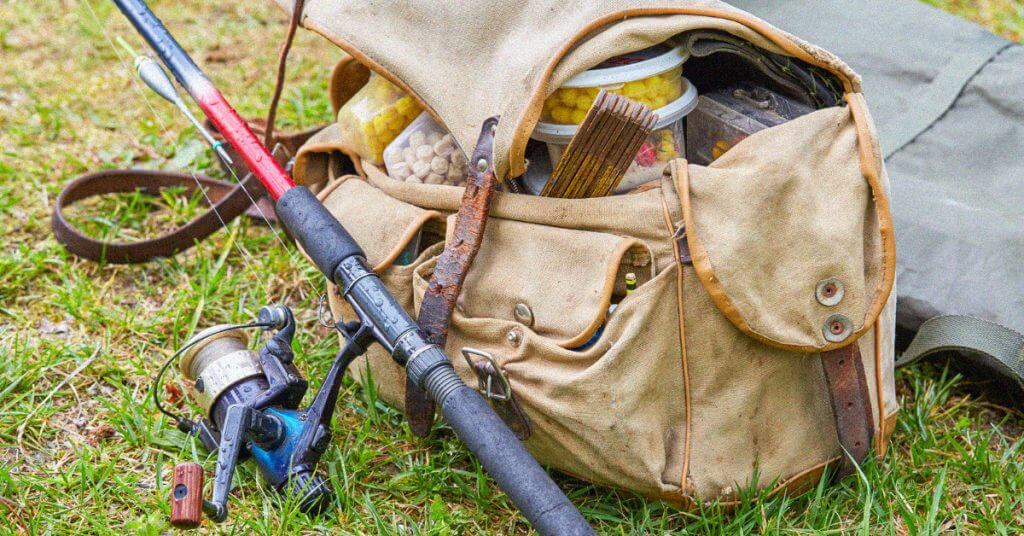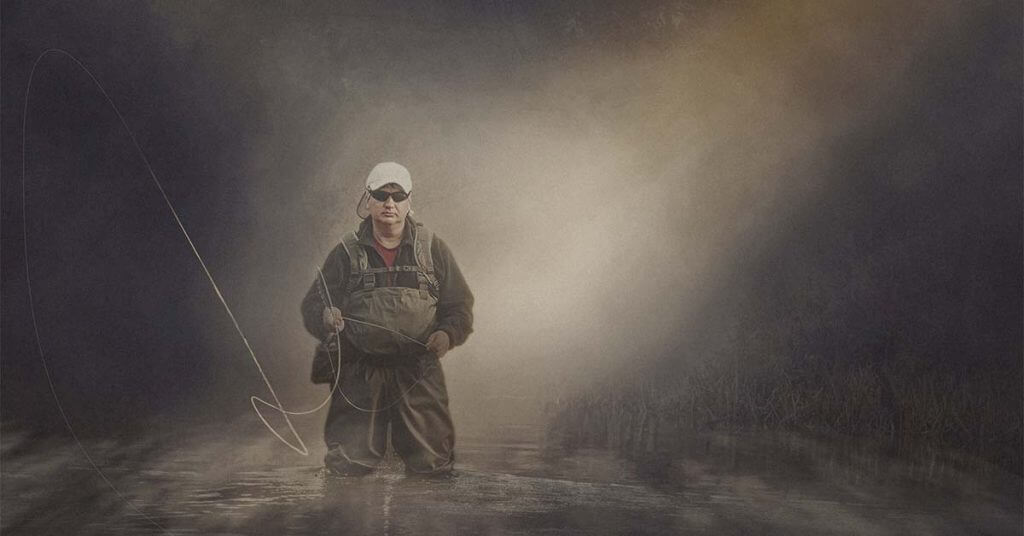The truth about tackle storage? Most boxes destroy your lures over time. See which ones passed our real-world testing (and why the priciest isn’t always best)
Last updated: November 27th, 2024
Video Review
If you prefer video format, check out my YouTube video above
Best Overall: Plano EDGE Series
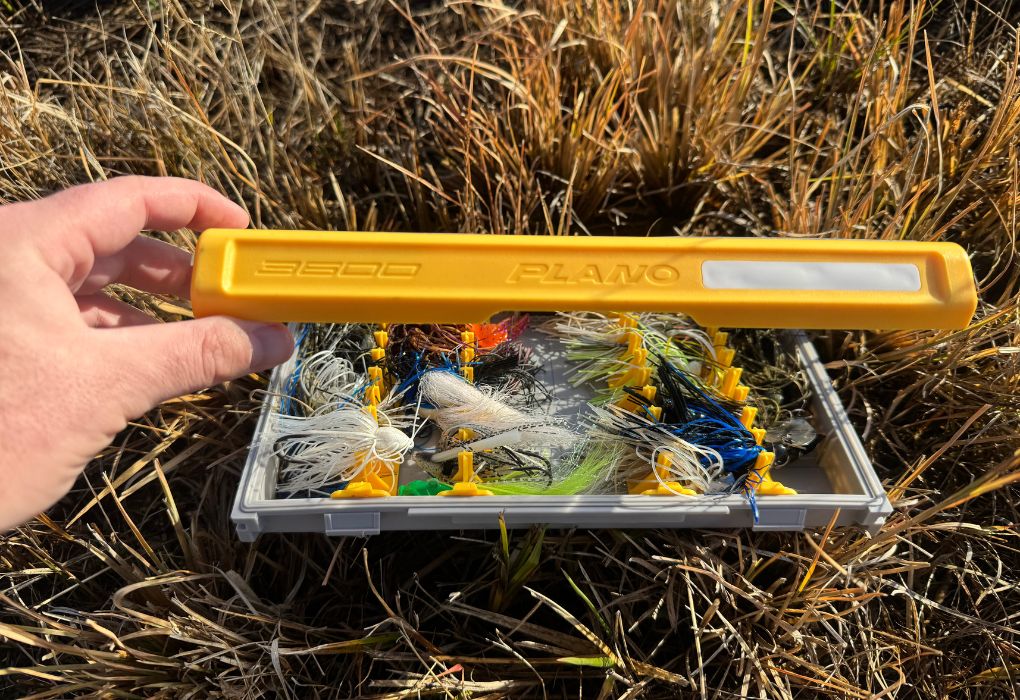
Specs
Pros
Cons
Why We Chose It
The Plano EDGE Series tackle boxes are the best on the market because they keep your gear organized, protected, and compact.
A big reason I love my EDGE boxes is that they’re easy to open, get what I need, and close with one hand. The latch runs the length of the box and feels solid, unlike some cheaper options.
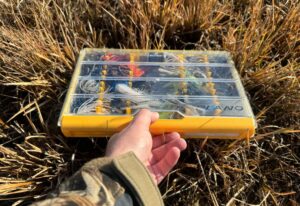
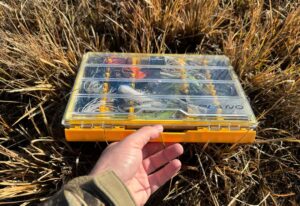
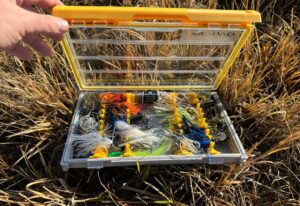
These tackle trays are incredibly customizable. You can purchase a box designed for the type of lure you’re storing and adjust the dividers to the perfect size for the tackle and lures you use the most.
Since I fish from a kayak, I rarely have room for all my gear, but these tackle trays are crazy compact and easily fit in my kayak crate or under my seat. Plus, they’re waterproof and rust-resistant, so when I put lures away wet or accidentally get water inside the tackle box, I don’t have to worry about my lures rusting.
While these are the best tackle boxes on the market, they come with a couple of downsides.
The biggest obstacle for me was the price. Because these are some of the most advanced tackle boxes available, they are not cheap. They are some of the most expensive on the market, considering how much gear they can hold.
To add a little more sting to the price, you’ll likely need to purchase additional boxes to house all your tackle. Plano makes several different styles for specific lures and gear, but you won’t have to buy them all to enjoy the benefits of these tackle trays.
Now that I’ve used the Plano EDGE series tackle boxes, I’d find it difficult to use anything else.
Most Waterproof: Bass Pro Shops Watertight Utility Boxes
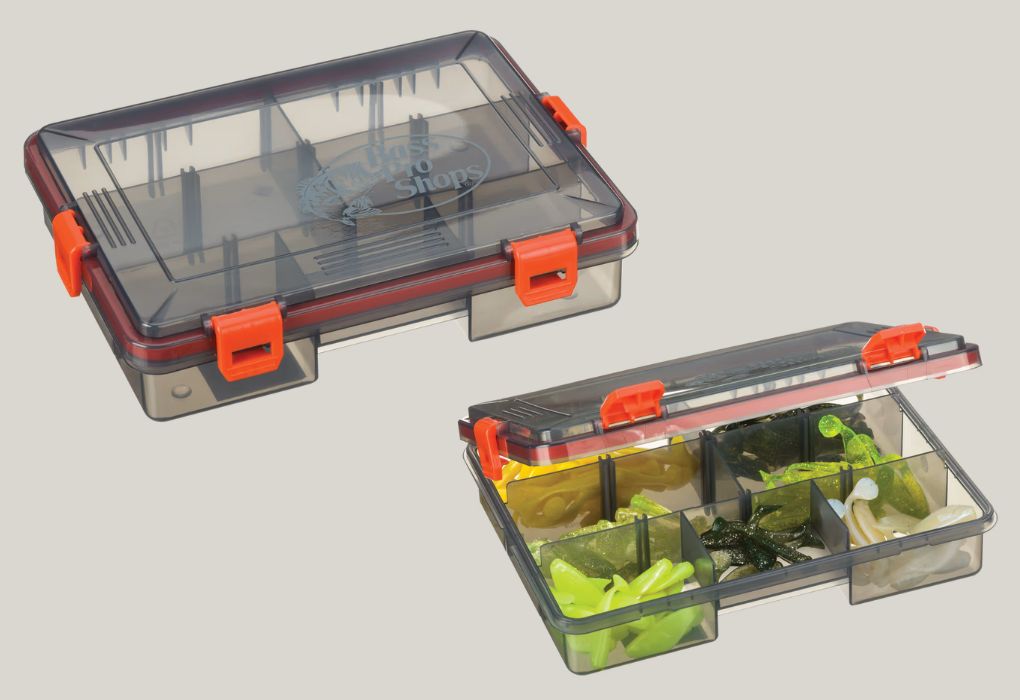
Specs
Colors
Pros
Cons
Why We Chose It
I learned about the advantages of a waterproof tackle box many years ago, but several of the options are so expensive that they don’t seem worth it. That’s not the case with the Bass Pro Shots Watertight Utility Boxes.
I love these waterproof tackle trays because they’re inexpensive and customizable, and they keep the water out. Bass Pro Tackle Trays are generally about half the price of other waterproof options yet have the same features.
You can choose between a small, medium, or large tackle tray. All come with dividers so you can adjust the size of the compartments to fit your lures.
A lesser-known feature is the tint on the boxes, which protects your lures from UV light that causes them to fade. This means your lures last longer and catch more fish.
However, don’t expect these inexpensive tackle trays to blow you away. They’re still a plastic box holding your gear, but if that’s all you’re looking for, you probably won’t be disappointed.
However, I also noticed that these trays don’t prevent rust. Some higher-end options have corrosion-preventing features, so your hooks don’t rust when you put your tackle away wet. If you’re looking for a tackle box that will keep your lures from rusting, I recommend the Plano EDGE Series.
Despite these slight downsides, you won’t find a better option for a waterproof tackle box than the Bass Pro Tackle Trays at this price range.
Budget-Friendly: Plano Guide Series 4-By Rack System
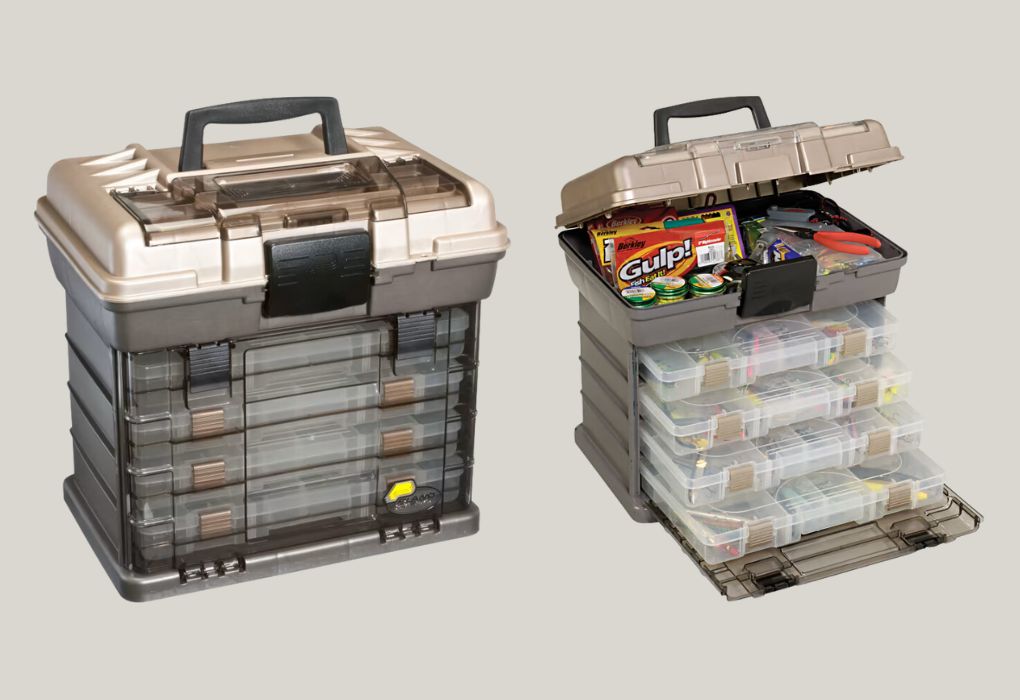
Specs
Pros
Cons
Why We Chose It
The Plano Guide Series 4-By Rack System securely holds all your fishing gear without breaking the bank.
I like this box because it can hold nearly all my tackle, and I can just take a tackle tray or two depending on where or how I’m fishing, so I don’t have to lug the gigantic box everywhere I go.
The latches firmly secure to keep everything inside during transport, so you won’t have to deal with a giant mess when you get to your favorite spot.
Lastly, the price is just dang near impossible to beat. Tackle box prices are getting crazy, but Plano does a good job of providing reasonably priced functionality for the average angler.
However, there are a few compromises you’ll have to make at this price. The first is just how bulky this box is. I wouldn’t recommend it for a small boat or kayak anglers because it takes up too much space, but it’s the perfect size if you plan to leave it in the back of your vehicle or in the shed and only bring the tackle trays you need.
The other biggest drawback is the amount of plastic present. Now, to be fair, most tackle boxes are made of plastic today, but this one is nothing but plastic. It’s also not waterproof, so you’ll have to dry it out well if you accidentally submerge it or decide to fish in the rain.
Overall, the Plano Guide Series 4-By Rack System is the best tackle box you’ll get at this price because of the sheer amount of gear you can keep organized.
Recent Updates
- Dec. 6, 2024: Removed outdated and out-of-stock products.
- Dec. 6, 2024: Added Plano EDGE series as the best overall because they’re currently the best options on the market.
Testing Procedures
I’ve fished with a ton of different tackle boxes over the years, including many of the ones I listed above, and I always come back to the same ones because of the features most important to me: compactness, tackle protection, organization, and price.
Compactness: I don’t have unlimited space to store my gear, so I look for a tackle box that is compact OR one that makes good use of the space it takes up. Bulky tackle boxes are great if you have room for them or don’t mind lugging them from spot to spot.
Protection: This is critical to my ranking decisions when testing tackle boxes. It must protect my lures from the sun, corrosion, and all the other abuses I put my gear through while fishing. I want to use my lures for a long time after buying them, so I need a tackle box that can stand up to tough conditions.
Organization: I’m not a naturally organized person, so any help I can get from my tackle box is much appreciated. That said, I also like a tackle box that has a little customization, so I can organize my lures how I want.
Price: We’re all on a budget, though some of us have a larger budget than others and can afford the fancy features of high-end tackle boxes. Other anglers don’t need or want all those features and don’t have to spend as much on a tackle box.
Types of Tackle Boxes
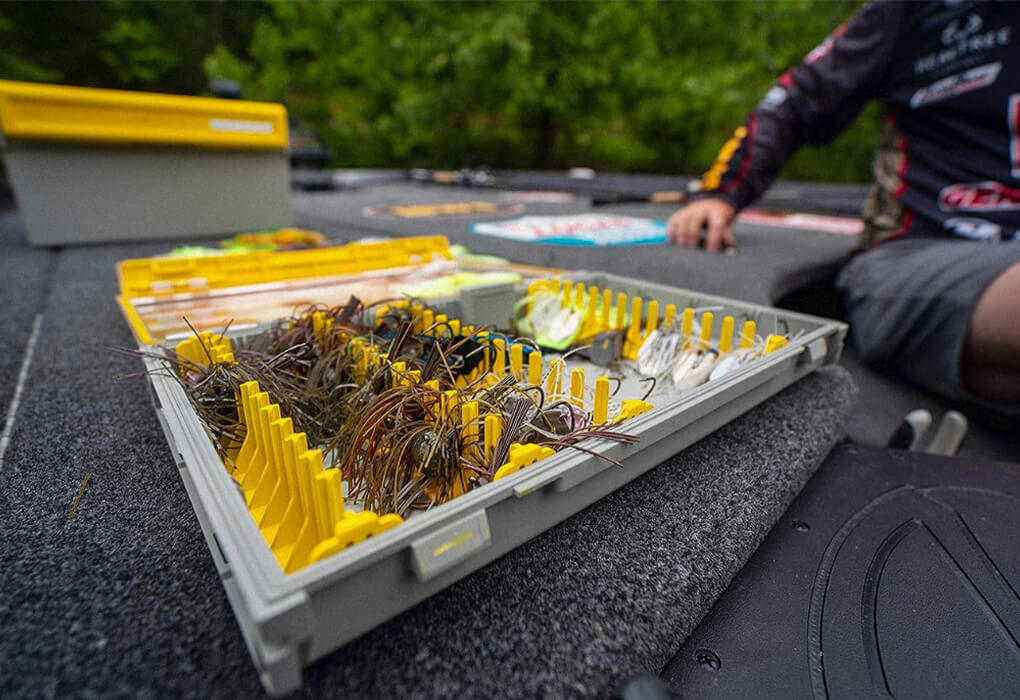
There are a few different types of boxes to choose from, and they each come with their own features. Let’s take a look at the various tackle storage solutions.
Hard
A hard box is your standard option that usually comes with cantilever trays on the inside. These are traditional options with a hard body and a solid handle on the top.
Many people go with hard boxes because they offer the most durability and water resistance as long as they have a strong, rustproof latch on the front.
The problem with these is they can crack and damage if you drop them or bang them around too much, leaving your lures vulnerable to corrosion.
Another issue that many bass anglers have with hard body boxes is that they are a bit bulky and usually heavier than their soft tackle-bag counterparts.
Soft
A soft tackle bag is a great alternative to the hard style because they’re usually lighter and, in some cases, can fit more gear.
They come with removable compartment trays on the inside, so you can take them out and see what lures you have without having to remove all the small boxes from the fishing tackle organizer.
The bottom of the bag is usually waterproof or resistant, and as long as you get a durable bag, you shouldn’t have to worry about tearing or damage.
I might use a soft bag if I were looking for something with a shoulder strap to make it easier to carry.
Overall, I see more and more people turning to this type of tackle storage because it’s more efficient and easier to move around, even if it doesn’t offer as much protection.
Rollable
Rollable tackle bags can come in both hard and soft varieties. They’re essentially the same as most soft tackle bags but they have wheels and a handle that extends so you can roll them around like a suitcase.
If you’ve decided you want to go with this type, I recommend you get one you can also carry.
No matter where you fish, you won’t be able to roll everywhere, and there will be plenty of times when you need to lift the bag. If there isn’t a shoulder strap, you’ll be wishing you made a different choice.
How to Choose the Best Tackle Box
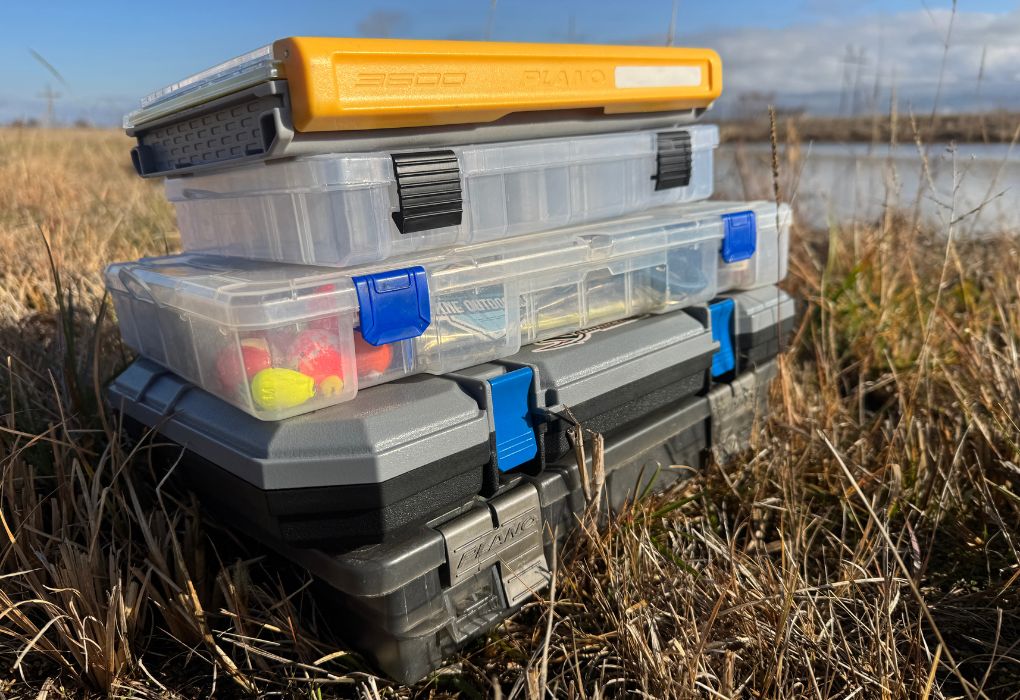
You’ve seen from the reviews above that there are many types of tackle boxes for fishing, each with their own unique features. Make sure to keep some of the following factors in mind before choosing the right one for you.
Size
Size is the clearest factor to keep in mind because you need to make sure you have enough space to store your jigs, crankbaits, soft plastics, topwaters, and the rest of your largemouth bass fishing lures.
On the other hand, you don’t want something so enormous that you can’t even get it into the boat or to the right spot along the shore.
I think most people reading this will do just fine with a tackle box capable of holding three or four compartment boxes.
That said, if you fish many different species, you might need to have a large assortment of tackle for each trip. If that sounds like you, you’ll want to have an extra-large tackle box so you can keep everything at hand at once. The last thing you want is to have to leave something in the car and then realize it would be the perfect opportunity for it.
Another thing you should think about relating to size is where you fish and how you get there. Personally, I have a pretty substantial walk to get to some of the places I fish, so I don’t want to drag a giant tackle box with me, and I can’t always wheel one, either.
I’m a fan of having a big tackle system for my car and then a smaller box I bring down to the water with me.
Storage
Going hand in hand with space is the amount of storage you have inside your tackle box for fishing. It sounds counterintuitive, but you can have a large tackle box that doesn’t have as much storage as a smaller one.
Your biggest tackle box should provide plenty of ways to organize everything separately so it all looks neat and you can spot everything quickly.
The more lures you carry, the more space and organizational features you’ll need.
If you frequently fish for many different species, you’ll likely want to have more storage because you’ll have more lures to bring. Some of you might even need a place to keep live bait, like shad and minnows.
Many of the hard boxes you’ll find use a cantilever system, which I like because you can see everything, and it’s incredibly neat, but these can be clunky and heavy when they’re full.
Plus, a lot of these hard containers don’t come with any anti-rust technology, so moisture builds up on the inside if you have wet lures and causes them all to rust out.
Make sure to keep that factor in mind as well.
Some soft bags come with separate compartments with mesh where you can keep wet gear, so it gets some air. This feature is especially important if you’re switching hard baits frequently and drowning a lot of different tackle.
Durability
You should get many years out of your box without having to stretch out the last few with duct tape and glue. Hard boxes are the most durable because few things can happen to them, and they’re more waterproof.
When you’re choosing a hard box, make sure it’s constructed using molded plastic if possible because it’s less likely to crack or damage due to weather. If you’re fishing in the rain a lot, you’ll want to pay extra attention to this.
Also, long-term exposure to hot sun will start to wear down the plastic, so keep it in the shade to extend the life of the box.
Final Thoughts
A tackle box might seem like a simple purchase, but it’s something you’ll use for many years, so you don’t want to take it too lightly.
Keep in mind the different styles of tackle boxes and how each one can impact your storage and organization.
The most important buying factor is plenty of organizational features, and all the boxes I recommended above have more than enough for the average angler, including my favorite, the Plano EDGE Series.
Be sure to leave us a comment if you have any questions about any of the gear in this article.
Frequently Asked Questions
How should you organize a tackle box?
How you organize a tackle box is something you need to experiment with because it varies from person to person. However, I strongly recommend keeping the gear you use most often the easiest to access.
What should I buy? Tackle box or tackle backpack?
When choosing between a tackle box or a tackle backpack, the biggest factor you need to consider is how far you need to carry it.
If you primarily fish from a boat, a tackle box will be best, but I prefer a tackle backpack while fishing from the bank because I have to carry it much further than boat anglers.
Which is better, pull-out compartments or removable ones?
Pull-out compartments are not as handy as removable ones. The removable containers are better if you keep everything well organized. If you’re disorganized, it doesn’t matter because everything is out of place anyway.
Are there any bass lures you can’t put in a tackle box?
Yes, there are some bass lures you can’t put in a tackle box. Large swim baits will typically need their own box because they take up so much space.

